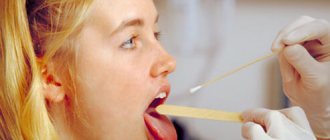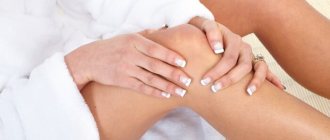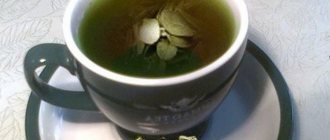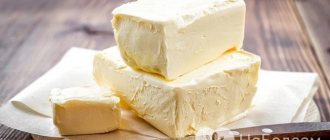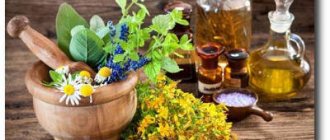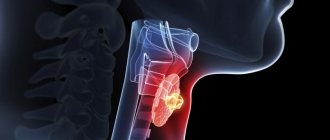We take salt for granted as a necessary seasoning for dishes. Meanwhile, this substance, important in cooking, is a healer, a magical protector and an assistant in the household.
For treatment, salt is often used in dissolved form. The methods have a number of nuances that you definitely need to know about. For example, how do you make a 10 percent saline solution if you don’t have chemical measuring spoons or beakers at home? How much salt and water should I take? Let's look at simple options for preparing medicinal solutions.
What salt is needed to prepare medicine?
Before preparing a 10% saline solution, you need to carefully study the recipe. What substance does it mention? If it is table salt, then the packages that indicate:
- kitchen salt;
- sodium chloride;
- table salt;
- rock salt.
The word “salt” is used in everyday life, although this term refers to many complex substances formed by metal ions or atoms and acidic residues.
In addition to sodium chloride, Epsom salt, magnesium sulfate, is used for medicinal purposes. Substances are extracted during the development of deposits in the earth's crust. If you evaporate sea water, you get sea salt, which contains sodium, magnesium, iodine, chloride, sulfate ions and other components. The properties of such a mixture differ somewhat from the individual substances. Typically, a 1–10% saline solution of sodium chloride is prepared to treat wounds, sore throats, and teeth. The chemical formula of a compound that has amazing properties is NaCl.
Healing properties for treating wounds
The high effectiveness of the saline solution is due to a fairly wide pharmacological spectrum:
- Adsorbent - salt molecules capture molecules of water, pus, foreign particles, and then bring them to the surface of the wound. This allows you to treat even the deepest injuries, in which the entire contents of the wound will come out. For the convenience of treating deep wounds, syringes can be used.
- Disinfection - in a salty environment, all pathogenic microorganisms die, since salt disrupts all metabolic processes, which leads to their death. Saline solution may well compete with other disinfectants.
- Anti-inflammatory and decongestant effect - salt removes fluid from the wound, prevents the development of swelling, redness and itching. The inflammatory process occurs in a less pronounced and painful form.
- Acceleration of regeneration processes - when exudate is removed, the wound dries faster and becomes crusty, which prevents bacteria from penetrating inside.
- Complete safety - if iodine and brilliant green cause burns to soft tissues, then the saline solution has a gentle effect on the wound without drying it out. Only dead and damaged cells that are not capable of regeneration are removed. Salt does not affect the quantitative and qualitative composition of blood.
- Does not cause the development of adverse reactions - if medications can provoke allergic reactions, then salt is a natural component necessary for the body.
Saline solution for wounds is an excellent remedy
Saline solution is easy to prepare and use
There is no need to buy special products at the pharmacy or study the instructions. The solution will be ready in 1 minute, until the salt is completely dissolved in the water. However, you should pay attention to such an important indicator as salt concentration. If you prepare the solution “by eye,” you can forget about the effectiveness of the procedure for two reasons:
- Lack of salt does not allow excess fluid to be removed from the wound and accelerate metabolic processes.
- An excess of salt can have a detrimental effect on the condition of newly formed epithelial cells, as a result of which regeneration will be difficult.
The correct amount of salt in the solution allows you to obtain a disinfecting, anti-inflammatory and decongestant effect.
Indications for use
The following types of wounds are treated with saline solution:
- open wounds and cuts (deep and shallow);
- purulent wounds;
- burns of varying degrees;
- wounds on the oral mucosa;
- weeping and long-term non-healing wounds;
- abrasions.
Important: What to do if you get a razor cut?
Saline solution can be used for open and weeping wounds and cuts
In addition, salt can affect not only the superficial part of the wound, but also penetrates into the muscles and bones. This property allows the use of a salt compress for complex trauma with bruises or bone damage.
To treat damage to the mucous membranes, rinse with saline solution. Its duration is 5-7 minutes, and the frequency depends on the type of wound.
If the wound remains wet for a long time, the solution is used every 3-4 hours, alternating with a drying powder.
What should be the degree of purity of the components?
How to make a 10 percent saline solution at home so that the medicine does good and not harm the body? Salt should also be as pure as possible, but salt purchased at the Kamennaya store is often contaminated with impurities. There is a purer finely ground product.
Some recipes recommend using snow or rain water, but this is a bad idea from the point of view of modern ecology. The purity of the liquid that flows in drinking water supply systems also raises many complaints. It, like snow and rain, can be contaminated with chlorine, iron, phenol, petroleum products, and nitrates. Let us clarify that distilled or demineralized water is used as a solvent in medicine. At home, you can use filtered or boiled water to prepare the solution.
If you put plastic molds with water in the freezer, the clean water will freeze first, and impurities will accumulate at the bottom. Without waiting for complete freezing, you need to collect the ice from the surface and melt it. The result will be very clean and healthy water.
Requirements and features of using saline solution for treating wounds
There is a range of requirements, compliance with which guarantees the achievement of the desired result in the shortest possible time:
- The concentration of salt in water is considered optimal: a 9% solution, which is identical in content to natural human tears. A 10% solution is acceptable, but no more. Excessively exceeding the level of salt in water can lead to the development of burns and overdrying of the open wound, which will slow down and complicate the regeneration process.
- Type of salt – do not use flavored sea salt or fine table salt. Medium-grind table rock salt without various additives, flavors and dyes is considered the best option.
- Ventilation - while applying a bandage to a wound, do not cover it with a piece of polyethylene, thick fabric or other objects to prevent the solution from spreading throughout the body. There must be ventilation under the bandage. Otherwise, increased moisture and heat from the wound will become an excellent condition for the development of pathogenic microorganisms.
- There is no need to insulate the compress - the bandage should be bandaged to the wound for maximum fixation. There is no need to insulate with scarves, scarves and blankets, since body temperature is quite enough to activate natural regeneration processes.
- Use only a sterile bandage - the dressing material must be made from natural fabrics. Preference is given to a sterile bandage and gauze treated with boiling water. It is not recommended to reuse dressing material, even if it is practically clean. Compliance with the rules of asepsis is the main guarantee of rapid wound scarring.
- Dressing temperature – in order to ensure maximum effect of treatment, it is recommended that the dressing be kept at a temperature slightly above body temperature. The cold saline solution and bandage will cause vasospasm, making it difficult for fluid to drain from the wound.
- Duration of use of the compress - do not keep the bandage on for more than 5 hours. Dressings are done at least 3 times a day. After the compress, the wound is washed with boiled water and treated with an antiseptic.
To prepare a saline solution for wounds, it is best to use medium-ground salt without flavorings or additives.
Not all saline solutions can be used to treat wounds:
- Isotonic – most similar to a saline solution of the body. Contains 9% salt in water. Does not cause wound irritation, and also does not provoke changes in the quantitative and qualitative composition of cells at the site of damage.
- Hypertonic – salt concentration more than 9%. Causes a decrease in cell size due to the removal of large amounts of fluid. Most effective when treating purulent and weeping wounds.
- Hypotonic - the concentration of salt in the solution is minimal, so it is practically not used for treating wounds.
All manipulations regarding the application of a salt dressing and wound dressing must be performed with sterile gloves, which will reduce the number of pathogenic microorganisms on the surface of the wound. For convenience, you can use tweezers that have been previously disinfected with alcohol.
Saline solution can be used not only in the form of compresses. Use it to rinse the wound well, especially if a bandage is stuck to it. Manipulation is best done with a syringe, since a stream of solution can penetrate deeper layers and speed up the process of soaking the tissue.
It is not recommended to use saline solution that was prepared 3-5 hours before use. The maximum effectiveness of the procedure is achieved when the product is used immediately after preparation.
When treating burn wounds, minimal concentrations of salt are used, which will be quite sufficient. Deep wounds require the insertion of a small swab of sterile bandage soaked in a solution. The drug can also be injected into the wound under pressure, for which a regular syringe without a needle is used. The effectiveness of using the solution when processing postoperative sutures is insignificant.
If the saline solution is incorrectly prepared or used too frequently, some adverse reactions may develop in the form of wound tightness, skin itching, increased swelling and hyperemia. In this case, you need to seek help from a doctor to select the appropriate treatment.
How to measure the mass of salt and the volume of water to prepare a solution?
Everything you need should be collected in advance, before making a 10% saline solution. You will need water, a beaker, a bag of salt, scales, a glass and a spoon (table, dessert or tea) for the work. The photo below will help you determine the mass of salt contained in a dessert spoon and a teaspoon.
Then you need to decide on the units of measurement for the liquid. It is believed that the mass of 100 ml of pure fresh water is equal to 100 g (the density of fresh water is 1 g/ml). Liquids can be measured with a beaker; if you don’t have one, then an ordinary glass of those called “faceted” will do. Filled to the top, it contains 200 ml of water (or g). If you pour to the very top, you get 250 ml (250 g).
What does the expression “10 percent solution” mean?
The concentration of substances is usually expressed in several ways. The most commonly used quantity in medicine and everyday life is the weight percentage. It shows how many grams of a substance are contained in 100 g of solution. For example, if a recipe states that a 10% saline solution is used, then every 100 g of such a preparation contains 10 g of the dissolved substance.
Let's say you need to prepare 200 g of a 10% salt solution. Let's carry out simple calculations that don't take much time:
100 g of solution contains 10 g of substance; 200 g of solution contains x g of substance. x = 200 g x 10 g: 100 g = 20 g (salt). 200 g – 20 g = 180 g (water). 180 g x 1 g/ml = 180 ml (water).
Salt dressings for runny nose. How to use salt dressings to treat various diseases
It would seem that the most ordinary salt, how can it help our body, except for its taste? It turns out that medicine has long known the treatment of many diseases with salt and salt dressings. It's worth checking out this treatment method.
From white death to bright life
We often underestimate the effect of salt on the human body. After all, a lack of sodium chloride has such serious consequences as dehydration of the body and imbalance of microorganisms.
Salt was widely used as an absorbent during the Second World War. At that time, Soviet field doctors did not have enough antiseptics, disinfectants, and other things. But it was necessary to save people’s lives, so doctors widely used saline solution.
After applying dressings with salt to the wounds, within three days
- the wounds were completely cleaned,
- suppuration passed,
- body temperature returned to normal
and the person felt better. It was precisely these actions of surgeons and natural salt that saved thousands of lives and many soldiers from gangrene.
After the end of hostilities, the use of salt in medicine became more widespread. And now salt is used to treat many other, but no less dangerous, ailments.
Properties of salt that promote healing
Much to your surprise, sodium chloride has unique properties that are not inferior in strength and effectiveness to expensive drugs.
These properties include the following characteristics:
- Absorption of toxins, germs, bacteria.
- Cleansing and restoring tissues.
- Point effect of the bandage on the applied area.
- Destruction of only unfavorable bacteria and viruses.
How to prepare a saline solution for bandage treatment
To get a 9% composition, you need to take 90 grams. salt and stir in 1 liter of boiled water. Therefore, if you take 80 grams of salt, you will get an 8% solution, 100 grams of salt - a 10% solution
Most often, 8 and 9 percent compositions are used.
The best dressing will come from a linen towel, washed and washed many times. You can apply 8 layers of gauze. You cannot put cellophane on the bandage, only bandage it with a bandage or secure it with a plaster.
When treating, the solution is taken hot, and the gauze is well moistened.
Treatment with salt dressings
In the modern world, salt treatment is used for many diseases and diseases of the human body. We will describe below how and what can be treated using saline solution.
Intestinal inflammation, poisoning, colitis, appendicitis
A saline bandage is applied to the abdomen. Soak a cotton cloth in the solution, fold it in four layers, place it on the stomach and leave overnight. Treatment is one week. In case of poisoning, two procedures are enough to remove toxins.
Diseases of the liver, gall bladder, gastritis
Place a waffle towel soaked in saline solution on the area from the base of the chest to the navel. Secure the bandage with bandages and leave for 10 hours. We carry out treatment for 10 days.
Note! When performing a procedure for the liver, due to the accumulation of bile in the epigastric region, unpleasant sensations may appear. Therefore, in the morning, when you remove the bandage, place a hot heating pad on the epigastric area and lie face down on it. This will help cleanse the liver and bile ducts.
Headache, runny nose, high blood pressure
Prepare an 8% saline solution by dissolving 80 grams of salt in a liter of water. We wet the fabric with the solution, wring it out and wrap the bandage around the head, securing it with bandages. Leave until the condition improves.
Flu, acute respiratory infection, cough
When the flu or acute respiratory infection begins, a saline bandage of 8% solution is placed on the head. If your throat hurts and there is a cough, then the bandage is also applied to the back and neck area.
A bandage on your back soaked in a 10% salt solution will relieve a strong cough - soak two towels in the solution, place them on your back, put a dry towel on top and secure with a bandage. Leave overnight.
Salt compress on the knee
This type of salt exposure to the knee is effective for arthrosis, varicose veins, and rheumatic pain. Also, such a compress can “dissolve” hematomas and disinfect wounds, thereby speeding up the healing process.
To obtain the desired effect, you can prepare one of the types of compresses, namely:
Hot Compress: Dilute 2 tablespoons of salt in one liter of water, and moisten a terry towel in this solution. All this must be applied to the knee joints and held for 30-40 minutes. This type of procedure will saturate the tissues with microelements, relax the knee ligaments, and improve blood circulation.
Simple compress: To do this, you need to dissolve 100 grams of salt in a liter of warm water. Having received a saturated saline solution, you need to moisten a bandage or cotton cloth and wrap it around your knee.
How to prepare a 10% saline solution?
If you have scales and a beaker in your house, then it is better to measure the mass of salt and the volume of water with their help. You can also take a full teaspoon and pour a glass of water up to the mark, but such measurements are prone to inaccuracies.
How to make a 10% saline solution to make 100 g of the drug? You should weigh out 10 g of solid sodium chloride, pour 90 ml of water into a glass and pour salt into the water, stirring with a spoon until dissolved. Mix salt with warm or cold water, and then heat the dishes with the ingredients. For better cleansing, the finished solution is passed through a ball of cotton wool (filtered).
You can prepare 50 g of a 10% solution from 45 ml of water and 5 g of salt. Hypertonic saline solution is made from 1 liter of water and 100 g of sodium chloride (4 tablespoons “without top”).
Saline dressing
To obtain maximum effect, the saline solution is applied to the wound in the form of a bandage. The procedure is carried out in the following sequence:
- The solution itself is prepared - salt is added to warm water and thoroughly mixed until completely dissolved.
- A section of bandage is prepared - the bandage or gauze (depending on the size of the wound) is folded into 8-9 layers, after which it is soaked in a saline solution until completely soaked.
- The wound is prepared - while the saline dressing is soaked in the solution, the old dressing is carefully removed from the wound. If the bandage is dry, you need to soak it with warm water or the same saline solution, generously wetting the entire stuck surface.
Saline dressing
A bandage soaked in saline solution is applied to the open wound. Its edges are carefully straightened and smoothed so that contact with the wound surface is maximum. In this position, allow the solution to drain well, after which a bandage is applied on top.
The wound site may be wet for some time, after which it dries out. During this time, it is recommended to leave the wound alone and move less.
The duration of the procedure is selected individually and lasts on average 5-6 hours. This is quite enough to remove all pathogenic microorganisms, dead cells and pus from the wound.
Saline dressings can be combined with wound healing drugs. So the effect of treatment will be several times higher. The choice of a particular medication depends on the type of wound, depth and individual characteristics of the body.
For convenience, the bandage should be applied by a healthcare worker or family member, since it is not always convenient to do this if there is a wound in hard-to-reach places.
Treatment with 10% saline solution
In medicine, a 0.9% solution of salts is prepared using fresh distilled water, which is called “physiological”. This liquid is isotonic with respect to the internal environment of the human body (has the same concentration). It is used during various medical procedures, in particular as a blood substitute, to eliminate the effects of dehydration and intoxication.
A hypertonic solution contains more salt; when it comes into contact with an isotonic or hypotonic liquid, it attracts water until the concentrations equalize. This osmotic effect is used in folk recipes to cleanse wounds of pus. Salt has antiseptic and antimicrobial properties; its hypertonic solutions are used in alternative medicine:
- for diseases of internal organs - in the form of a salt bandage on the source of pain;
- as lotions, compresses and applications for skin and other infections;
- as salt baths for fatigue and pain in the hands and feet;
- to cleanse purulent wounds.
Treatment with hypertonic 10% saline will take time and may take several days or weeks. The minimum number of procedures is 4–7. For sore throat, use a 3-5% hypertonic solution for gargling in the morning and evening. The nasal cavity is washed with an isotonic solution. To prepare it, you need to add 1.2 g of sodium chloride and 2.5 g of baking soda to 237 ml of boiled water.
Indications for use
The following types of wounds are treated with saline solution:
- open wounds and cuts (deep and shallow);
- purulent wounds;
- burns of varying degrees;
- wounds on the oral mucosa;
- weeping and long-term non-healing wounds;
- abrasions.
Saline solution can be used for open and weeping wounds and cuts
In addition, salt can affect not only the superficial part of the wound, but also penetrates into the muscles and bones. This property allows the use of a salt compress for complex trauma with bruises or bone damage.
To treat damage to the mucous membranes, rinse with saline solution. Its duration is 5-7 minutes, and the frequency depends on the type of wound.
If the wound remains wet for a long time, use the solution every 3-4 hours, alternating with drying powder.
Contraindications to the use of saline solutions exist in the presence of herpetic lesions and wounds associated with it. A small percentage of people have increased sensitivity of the skin to salt, which is manifested by allergic reactions. This method of treatment is not suitable for patients with metabolic disorders.
If the nasal septum is deviated, pathological conditions of the mucous membrane caused by various reasons cannot be treated with saline solution.
It is prohibited to use the solution in the presence of tumors of the nasal cavity to avoid bleeding.
Before using saline solution on various inflammations, it is advisable to seek advice from a doctor. We should not forget about possible side effects of internal organs and skin.
The simplest remedy is prescribed for the following pathologies:
- Rhinitis;
- Sinusitis;
- ARVI, acute respiratory infections;
- Flu;
- Sore throat;
- Runny nose due to allergies.
Each disease has a strictly dosed prescription, but you must first consult with your doctor.
Beneficial features
The saline solution simultaneously has several therapeutic effects:
- Prevents mucous membranes from drying out;
- Rinsing the nose, softens the crusts;
- Relieves swelling;
- Makes it easier to blow your nose;
- Strengthens the immune system;
- Reduces the risk of possible secondary infection;
- Has no side effects;
- Helps strengthen nasal blood vessels;
- Protects against allergies due to pollen and household industrial dust;
- Performs preventive work during the season of exacerbation of colds.
The composition is almost similar to the salt content in the blood serum, so the body does not perceive the treatment as an invasion of foreign substances.
A solution of sea salt is indispensable in the fight against viral, microbial, and allergic attacks, so doctors advise all patients who often catch colds to gargle with salt as a preventative measure and to spend more time by the sea.
The choice of salt type is not critical. Therapy with table or sea salt is equally effective for colds.
The only benefit of sea salt is iodine and minerals, which increase the effect of treatment. Pharmacies offer ready-made saline solutions - Aquamaris, Salin or Quicks, made with ocean water, or from salt with sea water for a runny nose. The only negative is the high cost, from 300 rubles.
An aqueous solution helps get rid of rhinitis at any age, however, there are some age-related differences in the formulation and dosage.
Infants
Infants are advised to use an aqueous salt preparation in three options:
- Homemade product. Pros: components are always at hand, manufactured at minimal cost. Disadvantages: short duration of action (days), it is easy to violate the exact proportions, the drug is unsterile.
- Saline solution. Advantages: sterility, dropper bottle is ready for use, minimal cost. Disadvantages: If the drug is poured into a large bottle, a pipette is required.
- Otrivin baby is a ready-made pharmaceutical product with a long shelf life. Positive properties: precise proportions, guaranteed sterility, long shelf life, convenient bottle. Negative qualities: high cost.
Salt rinsing is not recommended for children under 6 years of age; they can undergo light rinsing with a special dispenser spray several times a day.
For older people, treatment of a runny nose with saline solution is recommended as a preventive measure against colds.
The pharmacy sells special teapots for washing. If it is not possible to purchase a device, a disposable syringe of sufficient volume will do.
The child's head is placed over the sink or bathtub in an inclined position, with a slight turn to the side. The product is introduced into the nostril carefully, the pressure of the stream increases gradually. If the rinsing is done correctly, the solution will pour out from the other nostril with mucus impurities. Similar actions are carried out with the second nostril.
- One of the frequently recommended methods of washing is called “Cuckoo” - it is most effective for a runny nose, sinusitis, and is also perceived by the child as a game.
- It received its unusual name because of the “coo-coo” that is often pronounced during the procedure - a similar technique blocks the access of the solution and nasal mucus to the larynx.
- According to the famous children's doctor Evgeniy Komarovsky, the procedure is absolutely safe for children, and is most effective for a runny nose.
Using such a liquid for a runny nose will not cause any problems for an adult.
The solution is first poured into a suitable container for rinsing the sinuses. The best option is a pharmaceutical bulb for douching or a teapot that has not been used for its intended purpose for a long time.
Important! Rinsing the nose with a saline solution is not recommended for congestion - it will not be possible to obtain an effective effect.
For the results of the manipulation to be effective, it is better to do the rinsing in the evening, shortly before bedtime - this way, the body will retain heat and the runny nose will not have the opportunity to reactivate.
The solution for rhinitis is prepared and used in various proportions - you just need to choose the most suitable recipe.
In a glass of boiled water, a small pinch of salt is practically not felt. If you need to make a larger volume of water infusion, 1 liter of water will require 2 tsp. salt.
The product is equally effective for children and adults, including allergy sufferers. Indications for use: at the stage of development of “water” rhinitis, during epidemics of acute respiratory viral infections and influenza.
A preparation of weak consistency is prepared for infants: salt (¼ tsp) “without a slide” is stirred in 1 tbsp. water.
A preparation of 1 teaspoon of salt diluted in a glass of water is effective for thick mucus discharge and sinusitis.
The solution is most effective only for 3 days, then a fresh product is required. A small minus: after washing with a very salty solution, the mucous membrane in the nasal sinuses often becomes dry.
It is rarely used, it is indicated when working in conditions of very dusty air, also for sinusitis, to soften thick mucus secretions.
To enhance the effect on the thickness of mucus, it is permissible to prepare a product with the addition of iodine (no more than 5 drops) and a pinch of soda.
Important! All recipes use only warm boiled water; brewing with boiling water is excluded.
Pharmacy products
Pharmaceutical solutions have significant advantages over homemade drugs: they are prepared in the correct concentration, absolutely sterile, and packaged in special containers.
- Saline solution. When mixed with salted mineral water (ideally Borjomi or Essentuki), you get an excellent solution for treating rhinitis in allergy sufferers. The resulting drug does not irritate the nasal mucosa, and the respiratory passages are completely cleansed. In combination with other drugs it does not show aggressiveness.
- Preparations made from sea salt. Such a union is the safest for health. Available in ready-made drops or spray form. Pharmacies offer more than a dozen different aqueous formulations, except for the most common ones - Aquamaris or Aqualor, Humer, Salin, and Quicks work well.
Despite the obvious usefulness and harmlessness of using the solution, there are a number of contraindications to the use of the drug:
- recurring nosebleeds;
- individual intolerance to components;
- sinusitis, accompanied by the release of mucus mixed with pus;
- predisposition to inflammation of the ear cavity;
- tumor growths in the nasal cavity.
Even if there are no listed reasons, a person only has a cold - to be sure of the usefulness of this particular therapy, a medical recommendation is desirable.
Salt provides quick relief for rhinitis and its complicated course. The beneficial qualities of dissolved table or sea salt are undeniable: the aqueous composition is prepared daily, at virtually no cost, the product works without side effects, and has a minimum of reasons for refusal to use.

